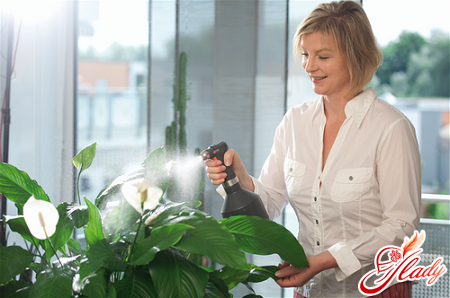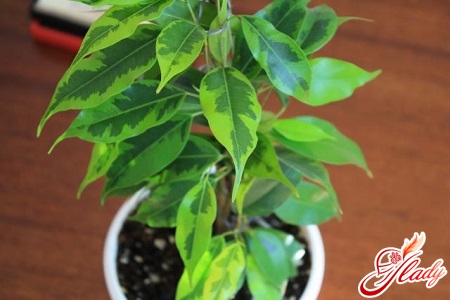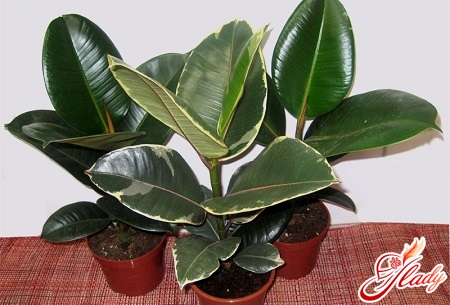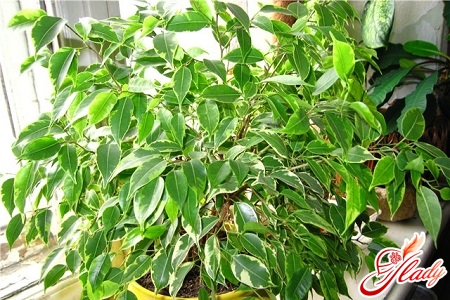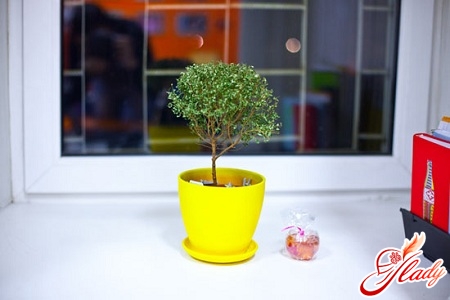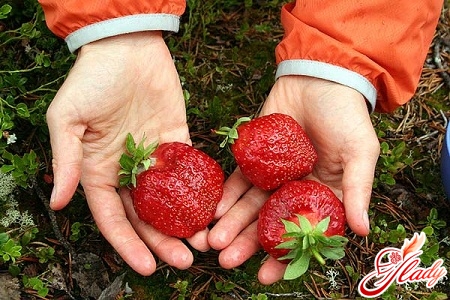 The first seasonal berry! And what a fragrant and juicy, sweet and beautiful! The benefits of this berry, too, all heard. And there is more vitamin C in it than in lemon. And calcium, as in milk, and antioxidants, as in green tea ... Useful and tasty, interesting for both culinary experts and gardeners - it's not for nothing that it has become a popular culture of our summer cottages! By the way, strawberries are very often (and mistakenly) called garden strawberries. Although strawberries and more garden strawberries, and leaves it is lighter, and berries are smaller. But there is no particular difference in the cultivation. Garden strawberries, or strawberries - planting and caring for them are almost identical. Therefore, we will not find out all the botanical subtleties, but let's talk about common rules for growing berries. How to grow strawberries on your site? Consider the features of planting and care, guaranteeing an excellent harvest of garden strawberries or strawberries (so we will call it). What will be the key to a good harvest? Correctly selected variety, well-prepared place, competent planting and caring care. So…
The first seasonal berry! And what a fragrant and juicy, sweet and beautiful! The benefits of this berry, too, all heard. And there is more vitamin C in it than in lemon. And calcium, as in milk, and antioxidants, as in green tea ... Useful and tasty, interesting for both culinary experts and gardeners - it's not for nothing that it has become a popular culture of our summer cottages! By the way, strawberries are very often (and mistakenly) called garden strawberries. Although strawberries and more garden strawberries, and leaves it is lighter, and berries are smaller. But there is no particular difference in the cultivation. Garden strawberries, or strawberries - planting and caring for them are almost identical. Therefore, we will not find out all the botanical subtleties, but let's talk about common rules for growing berries. How to grow strawberries on your site? Consider the features of planting and care, guaranteeing an excellent harvest of garden strawberries or strawberries (so we will call it). What will be the key to a good harvest? Correctly selected variety, well-prepared place, competent planting and caring care. So…
Choose a variety
Varieties of strawberries and strawberries great variety. Breeders here have worked on the glory! What does not offer us garden centers and nurseries. Berries of different maturity, different size, different yields, different shapes and different tastes. Here an unequivocal advice to give is simply impossible. Each variety has its own merits. It is best to choose zoned varieties for cultivation on a garden plot. They are most adapted to the climatic conditions of specific regions. Next, you should focus on your own goals and tastes. Choose the variety according to the maturity, the yield, the degree of sweetness of the berries. You can, of course, buy elite varieties in nurseries. But this should only be done by experienced gardeners. If you are just starting to realize your horticultural hobby, then stop picking on local varieties. With them, and less trouble and risk. But whatever sort you choose, it's good faith to treat strawberries.
We prepare the landing site
First you need to choose this place. Slightly acidic or neutral soils are most suitable for planting strawberries. The place under the beds should be sunny and even. However, the gentle south-western slopes are also suitable for a strawberry plantation. Strawberries are non-frost-resistant, well winter only under snow cover. Therefore, choose for its landing a place where cold air will not accumulate and snow will be blown away. Not suitable for strawberries and a damp place. Before planting beds, treat the soil with ammonium nitrate (200 g per 1 sq. M.) And any herbicides. For the strawberry patch, dig up the earth, loosen it with pitchforks and rake it with rakes. Droplet bed sprinkle a two-centimeter layer of sand. This will create uncomfortable conditions for the appearance (and residence) in your strawberry snails and slugs.
We choose the time of planting
Plant strawberries from early spring toautumn. In the spring, at the beginning of the summer season - the earlier, the better (depending on the climate). In autumn, you need to have time to plant strawberries two to three weeks before the first frosts (also depending on the region). The best time to plant a seedling is spring (from the middle of July). Plant it preferably in cloudy weather. And in clear and hot days - in the evening. If you plant a strawberry mustache, then you need to do this after the whiskers have fully matured - from the end of July to September. Dig up each outlet with a large clod of earth. Such a transplant will be less traumatic for strawberries. Seeds are sown at home (or in the greenhouse) in February-March (simultaneously with other seedlings). On an open plot seedlings of seeds are planted in May. It is possible to grow seedlings in summer (on a bed under a film). Young bushes are planted in a permanent place in August. 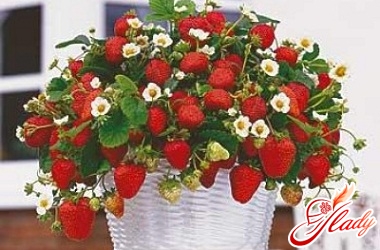
Choose the way of planting
There are three types of planting material for strawberry beds:
- seedlings (mustache),
- from an adult bush,
- seeds.
If you do not set out to grow somethingunique, then a suitable material for your strawberry plantation will be a young outlet. They appear on the numerous whiskers of adult plants. Such a mustache you will find in excess on your (or neighbor's) beds. Usually the mustache is cut off. But for reproduction they are left at the strongest and most productive bushes. Another possibility of planting strawberries is division. In this way, often reproduce an insensible strawberry. A strong and healthy shrub is divided into several parts, which are then planted on new beds. For the cultivation of patched strawberries, seeds are also used. Such planting of strawberries is also suitable for rare or unusual varieties. In addition, this method guarantees the production of healthy plants. But planting strawberries with seeds is a very laborious method. A lot of time passes from sowing seeds to the first harvest. So this method is suitable for either very patient or very enthusiastic horticulturists. The majority prefers not a particularly burdensome planting and an early harvest. Therefore, we plant strawberries on our plots most often seedlings from the mustache.
Cooking sprouts
Strawberry (garden strawberry) has an insidiousfeature. The most fruit-bearing bushes give little mustache. But the violent-green and generous to the mustache specimens, from which you want to pinch the mustache, are stingy for berries. Therefore, it is better to take a mustache from less lush, but more productive plants. Rosettes need to choose the largest (the larger the bush, the larger the berries on it). Learn to distinguish genetically small mustaches from those that are not yet mature (and therefore small). Genetically small have real leaves with already formed roots. The latter, with their modest dimensions, do not yet have roots. It is quite possible to grow high-yielding plants from such whiskers. If you are using rooted sockets for planting strawberries, they should be carefully excavated with a small clod of earth and immediately transplanted to a new location. Acquired seedlings should be washed before planting. To do this, prepare a solution: three tablespoons of salt, one teaspoon of copper sulfate and 10 liters of water. Soak the seedlings in it for 10-15 minutes, and then rinse it with clean water.
Planting seedlings
In the garden planted rosettes with three or fourleaflets. Plant bushes in the holes at a distance of 25-30 cm. The distance between the rows is from 60 to 90 cm. It is very important that the heart of the rosette (the place of growth of the leaves) be on a level with the soil. Otherwise, the bush will either rot, or wither. To ensure that the roots are well spread, you can pour a mound in the hole and plant seedlings on it, sprinkling with earth. After planting, strawberries should be poured immediately. The first two days the bushes need to be protected from the sun (covered with sheets of paper). Then, within a week, two or three times a day to water from the watering can (so that the seedlings well began). Then it will be enough to water a new bed once a week. If suddenly young bushes decide to bloom, then the flower stalks need to be removed (everything has its time). In August, the beds with the young strawberries need to be poured a few times, and in October they should be covered with flowers. Properly planted seedlings for winter will already become strong and fluffy bushes, which will ensure their good wintering and the first harvest. 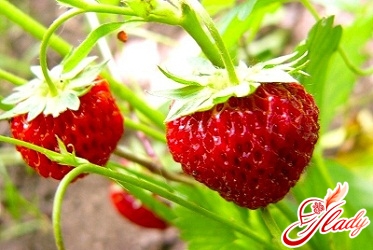
We care for strawberries
They say "what you sow, you'll reap." To grow strawberries one "sowing" is not enough. This berry is rather capricious and requires constant attention and care. There are general rules for the proper care of strawberries. Basically, they boil down to watering and weeding. Watering. Without watering, there will not be a good harvest. In the summer, the strawberry bed quickly dries up. Therefore, it is better to cover it up. For this purpose, hay, mowed lawn grass, and sawdust are suitable. The mulch spread between the bushes will retain moisture and protect the berries from rot. Weeds. Of course, the weeds are not deadly enemies of the strawberry - after all, it comes from the forest, where it grows in the grass. But they can affect the quality of the crop. Therefore, if you want to grow juicy and large berries, weeding, alas, is necessary. Despite the fact that the strawberry itself suppresses the weeds well, it is necessary to remove the grass both in the aisles and inside the bushes. Old leaves. The strawberries need to constantly break off the blushing leaves. Thus, the bushes will rejuvenate. It is also desirable to carry out cardinal rejuvenation. To do this, 3 weeks after the harvest is finished, all the foliage is mowed. For what? To stimulate growth, freedom from infection and pest infestation. Strictly speaking, mowing can not be called a necessary measure. But in some cases it does not hurt. And certainly, there will be no harm from this. After mowing and gathering of foliage it is desirable to process lobules of bushes against diseases and pests and fertilize strawberries with fertilizers. With fertilizers you need to be careful. With an excess of nitrogen fertilizers (for example, manure), large bushes with small berries are planted in your beds. Therefore, it is better to introduce a small amount of rotted compost or manure shortly before planting. And as a top dressing use ash.
Strawberry "crop rotation"
For the competent cultivation of strawberries on its ownthe following should be remembered. The next summer, after planting (the first year of fruiting), the strawberry gives a good, but not the highest yield. Harvest-repeaters are considered the most abundant: there are many berries and they are large. In the third year of fruiting, the berries become slightly smaller in size, although the yield does not decrease. This happens in the fourth year: the harvest is lower, and the berries are smaller. Therefore, after three crops (four years in one place), strawberries are removed. So, for a permanent and good harvest, you need to have three rows of strawberries: first, second and third years of fruiting. It is desirable not to plant a new strawberry where it already grew. It is possible to borrow this place for strawberries not earlier than in three or four seasons. Here are some simple and, for sure, useful recommendations will help you grow this wonderful, tasty, beautiful and useful berry on your site. Attach mute patience, diligence, knowledge - and the success of your strawberry-strawberry "plantation" will be provided! We advise you to read:




